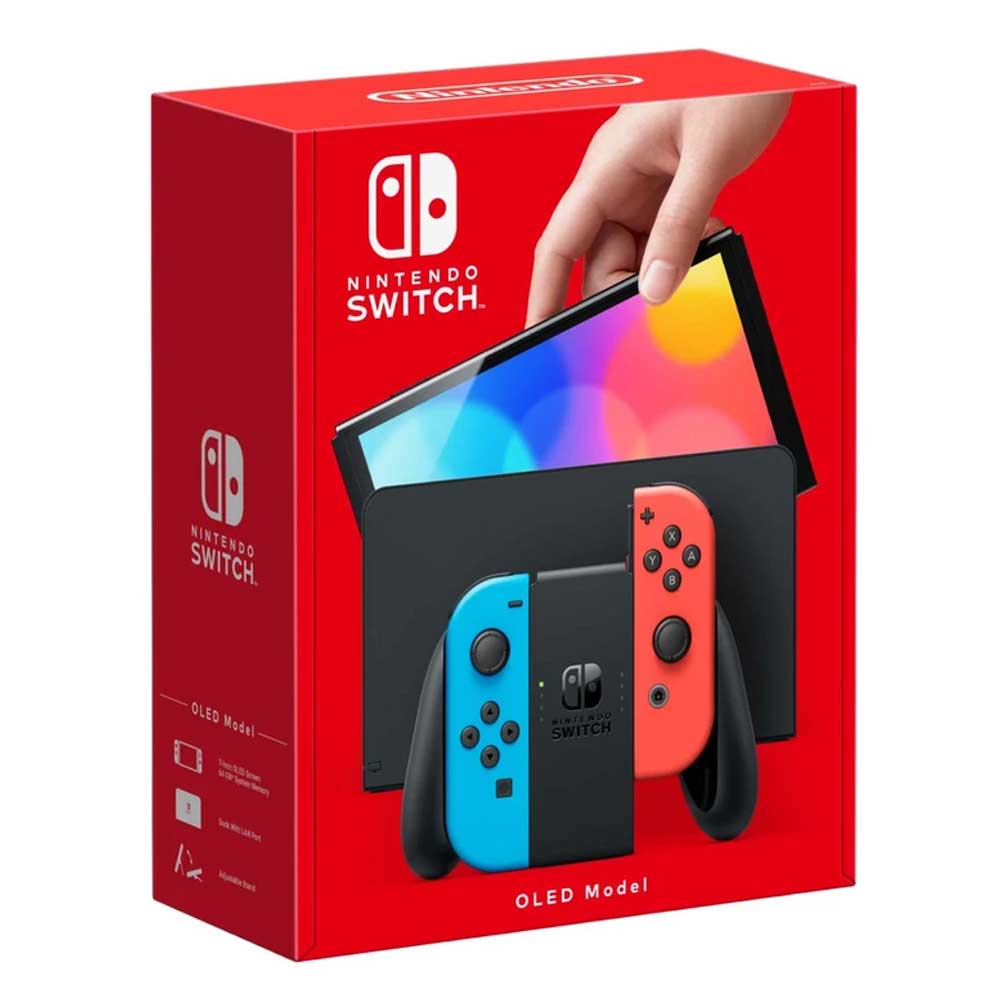There’s a new Switch in town, the Nintendo Switch OLED, and it boasts a bigger screen, a vibrant OLED display, and some much-needed quality of life improvements over the original model. But how does it compare to the Nintendo Switch Lite, Nintendo’s handheld-only device that was released in 2019?
We’re going to take a closer look at the Nintendo Switch OLED vs Nintendo Switch Lite in this head-to-head comparison, and hopefully help you decide which of Nintendo’s is right for you, and what the key differences are.
There’s more to consider than merely price alone, as the Nintendo Switch OLED and Nintendo Switch Lite address different consumer needs. However, that doesn’t make the buying decision anymore difficult, so let’s compare and contrast the two models, shall we?
Nintendo Switch OLED vs Nintendo Switch Lite: price and release date
The Nintendo Switch OLED is set to cost $349.99 / £309 / AU$539 when it launches on October 8, 2021. It’s technically the fourth version of the Nintendo Switch console, as Nintendo refreshed the original model in 2019 with improved battery life and a more efficient CPU, along with the release of the Nintendo Switch Lite.
Speaking of the Switch Lite, Nintendo’s handheld only model costs $199.99 / £199.99 / AU$329.95 and was released in 2019, which makes the new Switch model $150 more expensive than the Switch Lite.

Nintendo Switch OLED pre-orders have now begun, so if you’re interested in picking up the updated Switch model on October 8, it’s best to reserve your console now.
Nintendo Switch OLED vs Nintendo Switch Lite: design and features

The Nintendo Switch OLED looks almost identical to the original Switch console, with removable Joy-Con controllers, the same button layout, and the same Neon Blue and Red color scheme available – though it also has a classy new White option. The biggest difference is the console’s punchy OLED screen, which is 7 inches compared to the original’s 6.2-inch display, with significantly thinner bezels that give the device a more modern look while barely expanding the console's size and weight.
The Nintendo Switch OLED’s kickstand has also had an overhaul. It’s wider, more flexible, and should allow you to position the console in more angles during tabletop mode. The Switch OLED is equipped with better speakers, too, along with 64GB of internal storage – double the original.
Those who pick up the Nintendo Switch OLED will get access to a nicer-looking dock than the original, which features rounded edges and a built-in ethernet port for providing a more solid connection when playing online. Here’s what’s inside the Nintendo Switch OLED:
- Size: 9.5 x 0.55 x 4 inches (w x d x h)
- Weight: Approximately 0.71 lbs / 0.93 lbs with Joy-Con controllers attached
- Screen: Multi-touch capacitive touch screen / 7-inch OLED screen
- Resolution: 1280 x 720 (720p)
- CPU/GPU: Nvidia Custom Tegra processor
- Storage: 64GB (can be expanded using microSDHC or microSDXC cards up to 2TB)
- Wireless: WI-Fi (802.11 a/b/g/n/ac compliant)
- Video output: Up to 1080p via HDMI in TV mode, 720p in handheld mode
- Audio output: 5.1 Linear PCM
- Speakers: Stereo
- USB connector: USB Type-C for charging
- 3.5mm headphone jack
- Battery life: approximately 4.5-9 hours
- Charging time: approximately 3 hours
The Nintendo Switch Lite is a different proposition. It forgoes the Switch OLED’s hybrid Joy Con-detaching nature in favor of being a handheld-only device, which gives it the enviable perk of being the only Switch with a dedicated D-Pad. You can’t display games on a TV, though, nor can you pop off the Joy-Cons. Its portable focus means it’s smaller in size, with a 5.5-inch display, which is 1.5-inches shorter than the Switch OLED. There’s a wider selection of case colors to choose from over the new Switch as well, including Gray, Turquoise, Yellow, Coral and Blue.
From a technical perspective, the Switch Lite is a match for the Nintendo Switch OLED, however, it doesn’t have as impressive battery life – averaging three to seven hours as opposed to 4.5 to 9 hours.
Here’s what’s inside the Nintendo Switch Lite:
- Size: 8.2 x 0.55 x 3.6 inches (w x d x h)
- Weight: Approximately 0.61 lbs
- Screen: Multi-touch capacitive touch screen / 5.5-inch LCD screen
- Resolution: 1280 x 720 (720p)
- CPU/GPU: Nvidia Custom Tegra processor
- Storage: 32GB (can be expanded using microSDHC or microSDXC cards up to 2TB)
- Wireless: Wi-Fi (802.11 a/b/g/n/ac compliant)
- Speakers: Stereo
- USB connector: USB Type-C for charging
- 3.5mm headphone jack
- Battery life: approximately 3-7 hours
- Charging time: approximately 3 hours
Nintendo Switch OLED vs Nintendo Switch Lite: games

The good news is that both the Nintendo Switch OLED and Nintendo Switch Lite can play the entire library of Switch games available. Nintendo has noted that experiences with the Toy-Con accessories from the Nintendo Labo series may differ due to the Switch OLED’s larger screen, but that should be the only issue.
It’s important to note that the Nintendo Switch Lite won’t let you experience games on the big screen, though, as it's strictly a handheld-only device. You can’t detach the Joy-Con for some multiplayer fun or to use motion controls, either, and its LCD screen won’t look as pleasing to the eye as the new OLED display. However, the Switch Lite is considerably cheaper and still a great way to play the latest Switch games.
Another area where the Nintendo Switch OLED has a clear cut advantage over the Nintendo Switch Lite when it comes to games is that it has 64GB of internal storage as opposed to 32GB. That means if you like to download your games digitally from the Nintendo Switch eShop, you’ll have more room to play with. That being said, you can expand the storage of both Switch consoles thanks to the microSD card slot, which supports up to 2TB compatible cards. These tend to go for cheap, particularly during events like Amazon Prime Day and Black Friday, so it’s a negligible difference.
Nintendo Switch OLED vs Nintendo Switch Lite: verdict

Nintendo’s updated Switch OLED model will certainly be appealing to newcomers who want the very best Switch experience available, but the Nintendo Switch Lite is still a compelling proposition due to its cheaper price point and its more portable form factor.
While you can’t go wrong with either model, the Switch OLED provides more flexibility, as you can play on the go or on the TV when docked. However, it won’t look any different than the original Switch when playing on the big screen, as Nintendo opted against a 4K output. Where it will shine, though, is in handheld mode thanks to the vibrant and bigger OLED display.
The choice between the two consoles will tend to come down to how you expect to use your Switch. If you can’t picture yourself playing any other way than handheld and want a more compact form factor, the Nintendo Switch Lite may be the way to go. If you want to enjoy everything the Switch has to offer, though, including TV mode, handheld and tabletop mode, we’d recommend picking the pricier Nintendo Switch OLED.
- Nintendo Switch OLED vs Nintendo Switch: what's the difference?
from TechRadar - All the latest technology news https://ift.tt/2ViuNyv





0 Comments